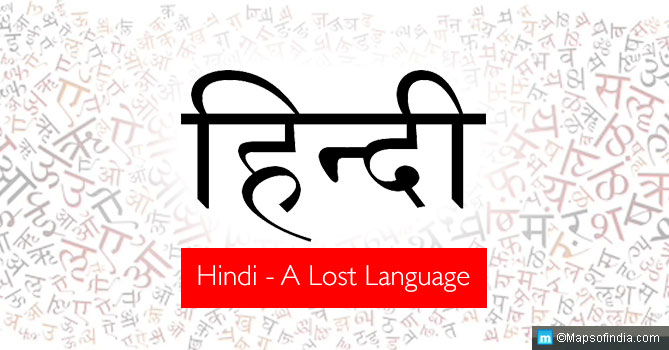The year is 2018.
Place of interest: A busy street in Delhi.
A young mother rebukes her son for the fifth time in the day. The reason? He just greeted another one of her friends with a Namaste instead of hello. There are appearances to be maintained.
Hindi, a language with centuries worth of rich history, today stands on the brink of becoming history itself. The disappearance has been gradual, perhaps even subtle, but the larger picture is alarming nonetheless. With the new generation creating a new wave (or anti-wave) for Hindi, let’s walk down the memory lane.
The historical origins
“Hindi”, the term was originally used for the people who inhabited the eastern parts of the Indus river, among the longest river bodies of Asia. It was later that the term was associated with the language as we know it today.
Like the other Indo-Aryan languages (the dominant family of languages in the Indian subcontinent), Hindi finds its roots in Vedic Sanskrit. Starting from 1500 BC- 800 BC, Vedic Sanskrit underwent lots of changes, being molded and reshaped with time. What many people don’t know is that, the modern day Hindi as we know it today, is actually among the youngest languages of India. Its ground work is in the Khari Boli dialect, one that only gained mainstream popularity in the 19th century. The dialect was mainly spoken in and around Delhi, and gradually replaced major dialects like Maithili, Braj, Awadhi etc. It was from Khari Boli that Standard Hindustani developed, modern day Hindi and Urdu. The language was heavily influenced by Khari Boli speaking Parsi writers, notably Amir Khusrao.
In 1881, Bihar declared Hindi as its sole official language, which was earlier Urdu. Doing so, it became the first Indian state to adopt the language officially. On 14 September, 1949, Hindi was adopted as the official language of India by our constituent assembly. The government, in 1954, set up a committee for the standardisation of Hindi grammar.
Language has often been a subtle expression of divide, at least in India’s case. First between the upper and lower caste, and eventually between India and Pakistan. The tragedy is, Hindi, a language that was once associated with eliticism is now struggling to stay alive.
The tragedy of Hindi’s slow decline
While Harivansh Rai Bachchan was working in the Ministry of External Affairs (beginning 1955), he worked closely with matters concerning the adoption of Hindi as our official language. In his autobiography, he mentioned how the office had an environment of English sophistication. He described how, if one closed their eyes, they could mistake the office for ‘a cocktail party in Oxford or Cambridge’. The sahibs viewed Hindi as nothing more than a language to converse with servants or chaprasis. Ironically, it seems as if the decline of Hindi had begun even as the talks of officialising the language were ongoing.
In the present era, there has been a decline in the popularity of Hindi, if not in its users. The population of Hindi speaking regions is increasing rapidly, explaining the increased numbers of Hindi speakers since 1970. However, in our daily lives, we see an erosion of the once popular language.
The social hypocrisy
Hindi is majorly spoken in the northern parts of the country. However, if you dig deeper today, megacities like Delhi, Gurugram seem determined not to pass off their mother tongue to the upcoming generations. Many believe, this is the slow death of the language. Parents prefer if their children are studying in an exclusive English medium school, now seen as a symbol of class. Partial credit goes to the popularity of our second official union language- English. It is the third most spoken language in the world, and is a common mode of communication all over the world. Understandably then, Indian parents these days want their children to be an expert user of the language.
However, what has happened in India is a shift from Hindi to English. The upper middle-class households in metro cities now use English as their primary language. What this has resulted in, is a new generation that feels insulted talking in Hindi, assuming they know the proper usage of the language in the first place. In several English medium schools, the habit of conversing in English is inculcated in students through a system of rewards and punishments. Imagine being rewarded for not talking in your mother language. While Hindi is still largely a compulsory subject till middle school at least, higher education is now almost entirely exclusively in English. Barely any modern age professionals know Hindi terminologies of their own profession.
The primary language for several websites, including those originated in India, is English. The reason is obvious- the popularity and elitism given to English, while at the same time seeing Hindi as a backward language. While in no way supporting the imposition of Hindi as the official language of the country, one must give some thought to its decline. The northern mega-cities are all on their way of forgetting. Caught up in a race to adopt the western whims of language, is this our road to a modern world?






